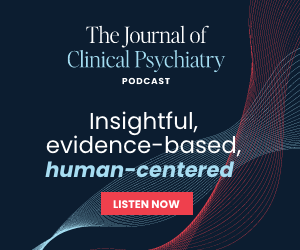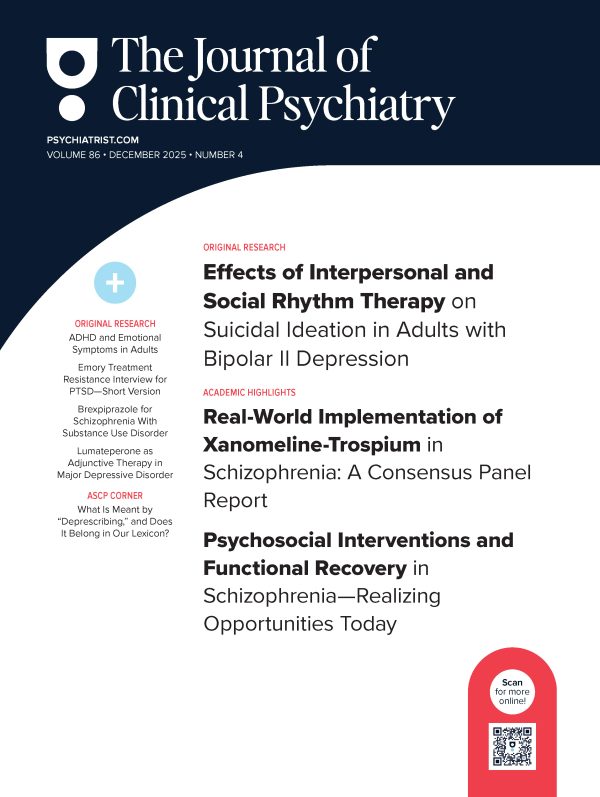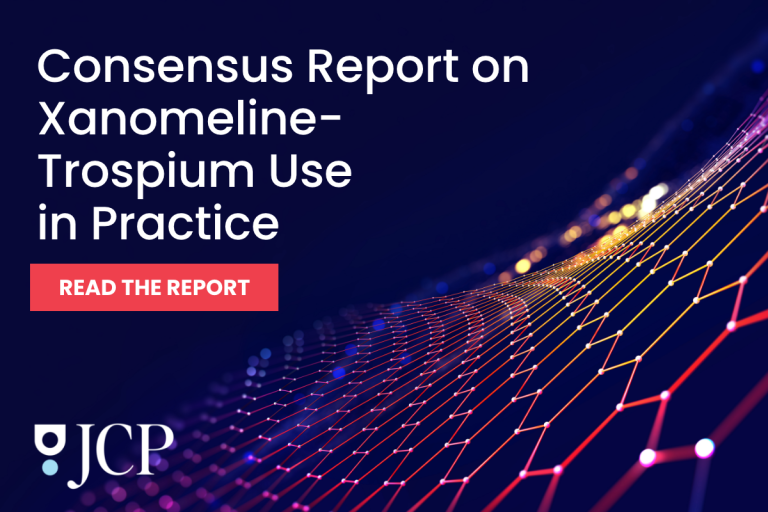
ABSTRACT
Objective: To study the differences in early-life characteristics between patients with an early onset of psychotic disorders (EOP, aged < 18 years) versus adult onset of psychotic disorders (AOP, aged ≥ 18 years) and to identify predictors of earlier onset.
Methods: 278 patients with a first episode of psychosis between the ages of 7 and 35 years were recruited as part of a multicenter prospective longitudinal study conducted in Spain between January 1, 2009, and December 31, 2011, with diagnoses made for AOP using the Structured Clinical Interview for DSM-IV Axis I Disorders (SCID-I) and for EOP using the Schedule for Affective Disorders and Schizophrenia for School-Aged Children (K-SADS). Early-stage factors such as prenatal, perinatal, and other premorbid factors were registered and compared between EOP and AOP patients. To analyze the association between baseline variables and outcome, univariate and multivariate logistic regression models were used, and the association or odds ratios (ORs) for significant risk factors were calculated.
Results: 224 patients with AOP (mean ± SD age = 25.6 ± 5.0 years; 65.6% male) and 54 patients with EOP (16.1 ± 1.7 years; 68.5% male) were included. Univariate analysis revealed significant differences between the groups. Specifically, compared to AOP subjects, EOP patients had more frequent obstetric complications (OCs) (P < .001), birth weight < 2.500 g (P < .028), a background of any personal psychiatric disorder (P < .001), a previous diagnosis of attention-deficit/hyperactivity disorder (P = .001), and premorbid IQ < 85 (P < .001). In the multivariate model, only OCs (OR = 5.44), personal psychiatric background (OR = 4.05), and IQ < 85 (OR = 3.96) predicted an onset of the first episode of psychosis before age 18 years.
Conclusions: Premorbid factors such as OCs, personal psychiatric background, and IQ < 85 could help predict which patients are more likely to have an early onset of psychosis. Awareness of these factors could help clinicians work to prevent the early transition to psychosis in children and adolescents.
Members Only Content
This full article is available exclusively to Professional tier members. Subscribe now to unlock the HTML version and gain unlimited access to our entire library plus all PDFs. If you’re already a subscriber, please log in below to continue reading.
References (66)

- Immonen J, Jääskeläinen E, Korpela H, et al. Age at onset and the outcomes of schizophrenia: a systematic review and meta-analysis. Early Interv Psychiatry. 2017;11(6):453–460. PubMed CrossRef
- Jin H, Mosweu I. The societal cost of schizophrenia: a systematic review. Pharmacoeconomics. 2017;35(1):25–42. PubMed CrossRef
- Clemmensen L, Vernal DL, Steinhausen HC. A systematic review of the long-term outcome of early onset schizophrenia. BMC Psychiatry. 2012;12(1):150. PubMed CrossRef
- McClellan J, Stock S; American Academy of Child and Adolescent Psychiatry (AACAP) Committee on Quality Issues (CQI). Practice parameter for the assessment and treatment of children and adolescents with schizophrenia. J Am Acad Child Adolesc Psychiatry. 2013;52(9):976–990. PubMed CrossRef
- Hegarty JD, Baldessarini RJ, Tohen M, et al. One hundred years of schizophrenia: a meta-analysis of the outcome literature. Am J Psychiatry. 1994;151(10):1409–1416. PubMed CrossRef
- Rajji TK, Ismail Z, Mulsant BH. Age at onset and cognition in schizophrenia: meta-analysis. Br J Psychiatry. 2009;195(4):286–293. PubMed CrossRef
- Biswas P, Malhotra S, Malhotra A, et al. Comparative study of neuropsychological correlates in schizophrenia with onset in childhood, adolescence and adulthood. Eur Child Adolesc Psychiatry. 2006;15(6):360–366. PubMed CrossRef
- Eggers C, Bunk D. The long-term course of childhood-onset schizophrenia: a 42-year followup. Schizophr Bull. 1997;23(1):105–117. PubMed CrossRef
- Weinberger DR. Implications of normal brain development for the pathogenesis of schizophrenia. Arch Gen Psychiatry. 1987;44(7):660–669. PubMed CrossRef
- Murray RM, Lewis SW, Lecturer L. Is schizophrenia a neurodevelopmental disorder? Br Med J (Clin Res Ed). 1987;295(6600):681–682. PubMed CrossRef
- Garcia-Rizo C, Bitanihirwe BKY. Implications of early life stress on fetal metabolic programming of schizophrenia: a focus on epiphenomena underlying morbidity and early mortality. Prog Neuropsychopharmacol Biol Psychiatry. 2020;101:109910. PubMed CrossRef
- Davies C, Segre G, Estradé A, et al. Prenatal and perinatal risk and protective factors for psychosis: a systematic review and meta-analysis. Lancet Psychiatry. 2020;7(5):399–410. PubMed CrossRef
- Khandaker GM, Barnett JH, White IR, et al. A quantitative meta-analysis of population-based studies of premorbid intelligence and schizophrenia. Schizophr Res. 2011;132(2-3):220–227. PubMed CrossRef
- Parellada M, Gomez-Vallejo S, Burdeus M, et al. Developmental differences between schizophrenia and bipolar disorder. Schizophr Bull. 2017;43(6):1176–1189. PubMed CrossRef
- Kessler RC, Amminger GP, Aguilar-Gaxiola S, et al. Age of onset of mental disorders: a review of recent literature. Curr Opin Psychiatry. 2007;20(4):359–364. PubMed CrossRef
- Luck SJ, Leonard CJ, Hahn B, et al. Is attentional filtering impaired in schizophrenia? Schizophr Bull. 2019;45(5):1001–1011. PubMed CrossRef
- Levy E, Traicu A, Iyer S, et al. Psychotic disorders comorbid with attention-deficit hyperactivity disorder: an important knowledge gap. Can J Psychiatry. 2015;60(suppl 2):S48–S52. PubMed
- Bernardo M, Bioque M, Parellada M, et al; PEPs Group. Assessing clinical and functional outcomes in a gene-environment interaction study in first episode of psychosis (PEPs). Rev Psiquiatr Salud Ment. 2013;6(1):4–16. PubMed CrossRef
- Bernardo M, Cabrera B, Arango C, et al. One decade of the first episodes project (PEPs): advancing towards a precision psychiatry. Rev Psiquiatr Salud Ment (Engl Ed). 2019;12(3):135–140. PubMed CrossRef
- American Psychiatric Association. Diagnostic and Statistical Manual of Mental Disorders. Fourth edition. Washington, DC: American Psychiatric Association; 1994.
- Hollingshead A, Redlich F. Social Class and Mental Illness. New York NY,: Wiley; 1958.
- Lewis SW, Murray RM. Obstetric complications, neurodevelopmental deviance, and risk of schizophrenia. J Psychiatr Res. 1987;21(4):413–421. PubMed CrossRef
- Verdoux H, Geddes JR, Takei N, et al. Obstetric complications and age at onset in schizophrenia: an international collaborative meta-analysis of individual patient data. Am J Psychiatry. 1997;154(9):1220–1227. PubMed CrossRef
- Wechsler D. Wechsler Intelligence Scale for Children-IV (WISC-IV). Madrid, Spain: TEA Ediciones; 2003.
- Wechsler D. Wechsler Intelligence Scale for Adults. 2nd edition. Madrid, Spain: TEA Ediciones; 2001.
- Cannon-Spoor HE, Potkin SG, Wyatt RJ. Measurement of premorbid adjustment in chronic schizophrenia. Schizophr Bull. 1982;8(3):470–484. PubMed CrossRef
- Perkins DO, Leserman J, Jarskog LF, et al. Characterizing and dating the onset of symptoms in psychotic illness: the Symptom Onset in Schizophrenia (SOS) inventory. Schizophr Res. 2000;44(1):1–10. PubMed CrossRef
Mezquida G, Cabrera B, Martínez-Arán A, et al. Detection of early psychotic symptoms: validation of the Spanish version of the “Symptom Onset in Schizophrenia (SOS) inventory.” Psychiatry Res. 2018;261:68–72. PubMed CrossRef
- First M, Spitzer R, Gibbon M, et al. Structured Clinical Interview for DSM-IV Axis I Disorders, Clinician Version (SCID-CV). Washington, DC: American Medical Association; 1997.
- Kaufman J, Birmaher B, Brent D, et al. Schedule for affective disorders and schizophrenia for school-age children-present and lifetime version (K-SADS-PL): initial reliability and validity data. J Am Acad Child Adolesc Psychiatry. 1997;36(7):980–988. PubMed CrossRef
- Ulloa RE, Ortiz S, Higuera F, et al. Interrater reliability of the Spanish version of Schedule for Affective Disorders and Schizophrenia for School-Age Children—Present and Lifetime version (K-SADS-PL) [in Spanish]. Actas Esp Psiquiatr. 2006;34(1):36–40. PubMed
- Sato T, Bottlender R, Schröter A, et al. Psychopathology of early-onset versus late-onset schizophrenia revisited: an observation of 473 neuroleptic-naive patients before and after first-admission treatments. Schizophr Res. 2004;67(2–3):175–183. PubMed CrossRef
- Luoma S, Hakko H, Ollinen T, et al. Association between age at onset and clinical features of schizophrenia: the Northern Finland 1966 birth cohort study. Eur Psychiatry. 2008;23(5):331–335. PubMed CrossRef
- White T, Ho BC, Ward J, et al. Neuropsychological performance in first-episode adolescents with schizophrenia: a comparison with first-episode adults and adolescent control subjects. Biol Psychiatry. 2006;60(5):463–471. PubMed CrossRef
- Ballageer T, Malla A, Manchanda R, et al. Is adolescent-onset first-episode psychosis different from adult onset? J Am Acad Child Adolesc Psychiatry. 2005;44(8):782–789. PubMed CrossRef
- Schimmelmann BG, Conus P, Cotton S, et al. Pre-treatment, baseline, and outcome differences between early-onset and adult-onset psychosis in an epidemiological cohort of 636 first-episode patients. Schizophr Res. 2007;95(1–3):1–8. PubMed CrossRef
- Joa I, Johannessen JO, Langeveld J, et al. Baseline profiles of adolescent vs adult-onset first-episode psychosis in an early detection program. Acta Psychiatr Scand. 2009;119(6):494–500. PubMed CrossRef
- Mittal VA, Ellman LM, Cannon TD. Gene-environment interaction and covariation in schizophrenia: the role of obstetric complications. Schizophr Bull. 2008;34(6):1083–1094. PubMed CrossRef
- Scott J, McNeill Y, Cavanagh J, et al. Exposure to obstetric complications and subsequent development of bipolar disorder: systematic review. Br J Psychiatry. 2006;189(1):3–11. PubMed CrossRef
- Guth C, Jones P, Murray R. Familial psychiatric illness and obstetric complications in early-onset affective disorder: a case-control study. Br J Psychiatry. 1993;163(4):492–498. PubMed CrossRef
- Taylor MA, Abrams R. Early- and late-onset bipolar illness. Arch Gen Psychiatry. 1981;38(1):58–61. PubMed CrossRef
- Rubio-Abadal E, Ochoa S, Barajas A, et al; GENIPE Group. Birth weight and obstetric complications determine age at onset in first episode of psychosis. J Psychiatr Res. 2015;65:108–114. Published online Mar 27, 2015. PubMed CrossRef
- Grupo de trabajo de la Guía de práctica clínica de atención en el embarazo y puerperio. Guía de práctica clínica de atención en el embarazo y puerperio. Ministerio de Sanidad, Servicios Sociales e Igualdad. Agencia de Evaluación de Tecnologías Sanitarias de Andalucía; 2014. https://portal.guiasalud.es/wp-content/uploads/2018/12/GPC_533_Embarazo_AETSA_compl.pdf
- Leader J, Bajwa A, Lanes A, et al. The effect of very advanced maternal age on maternal and neonatal outcomes: a systematic review. J Obstet Gynaecol Can. 2018;40(9):1208–1218. PubMed CrossRef
- Usta IM, Nassar AH. Advanced maternal age, part I: obstetric complications. Am J Perinatol. 2008;25(8):521–534. PubMed CrossRef
- Maibing CF, Pedersen CB, Benros ME, et al. Risk of schizophrenia increases after all child and adolescent psychiatric disorders: a nationwide study. Schizophr Bull. 2015;41(4):963–970. PubMed CrossRef
- Engqvist U, Rydelius PA. The occurrence and nature of early signs of schizophrenia and psychotic mood disorders among former child and adolescent psychiatric patients followed into adulthood. Child Adolesc Psychiatry Ment Health. 2008;2(1):30. PubMed CrossRef
- Dalsgaard S, Mortensen PB, Frydenberg M, et al. Association between attention-deficit hyperactivity disorder in childhood and schizophrenia later in adulthood. Eur Psychiatry. 2014;29(4):259–263. PubMed CrossRef
- Shyu YC, Yuan SS, Lee SY, et al. Attention-deficit/hyperactivity disorder, methylphenidate use and the risk of developing schizophrenia spectrum disorders: a nationwide population-based study in Taiwan. Schizophr Res. 2015;168(1–2):161–167. PubMed CrossRef
- Welham J, Isohanni M, Jones P, et al. The antecedents of schizophrenia: a review of birth cohort studies. Schizophr Bull. 2009;35(3):603–623. PubMed CrossRef
- Kendler KS, Ohlsson H, Sundquist J, et al. IQ and schizophrenia in a Swedish national sample: their causal relationship and the interaction of IQ with genetic risk. Am J Psychiatry. 2015;172(3):259–265. PubMed CrossRef
- Morsing E, Asard M, Ley D, et al. Cognitive function after intrauterine growth restriction and very preterm birth. Pediatrics. 2011;127(4):e874–e882. PubMed CrossRef
- Christian P, Murray-Kolb LE, Tielsch JM, et al. Associations between preterm birth, small-for-gestational age, and neonatal morbidity and cognitive function among school-age children in Nepal. BMC Pediatr. 2014;14(1):58. PubMed CrossRef
- Wortinger LA, Engen K, Barth C, et al. Obstetric complications and intelligence in patients on the schizophrenia-bipolar spectrum and healthy participants. Psychol Med. 2020;50(11):1914–1922. PubMed CrossRef
- Margari F, Petruzzelli MG, Lecce PA, et al. Familial liability, obstetric complications and childhood development abnormalities in early onset schizophrenia: a case control study. BMC Psychiatry. 2011;11(1):60. PubMed CrossRef
- Asarnow RF, Nuechterlein KH, Fogelson D, et al. Schizophrenia and schizophrenia-spectrum personality disorders in the first-degree relatives of children with schizophrenia: the UCLA family study. Arch Gen Psychiatry. 2001;58(6):581–588. PubMed CrossRef
- Nicolson R, Brookner FB, Lenane M, et al. Parental schizophrenia spectrum disorders in childhood-onset and adult-onset schizophrenia. Am J Psychiatry. 2003;160(3):490–495. PubMed CrossRef
- Hilker R, Helenius D, Fagerlund B, et al. Is an early age of illness onset in schizophrenia associated with increase genetic susceptibility? Analysis of data from the nationwide Danish twin register. EBioMedicine. 2017;18:320–326. PubMed CrossRef
- Murray RM, Bhavsar V, Tripoli G, et al. 30 years on: how the neurodevelopmental hypothesis of schizophrenia morphed into the developmental risk factor model of psychosis. Schizophr Bull. 2017;43(6):1190–1196. PubMed CrossRef
- Howes OD, Murray RM. Schizophrenia: an integrated sociodevelopmental-cognitive model. Lancet. 2014;383(9929):1677–1687. Published online Dec 6, 2013. PubMed CrossRef
- van Os J, Rutten BP, Poulton R. Gene-environment interactions in schizophrenia: review of epidemiological findings and future directions [published online ahead of print October 5, 2020]. Schizophr Bull. 2008;34(6):1066–1082. PubMed CrossRef
- Gurholt TP, Lonning V, Nerland S, et al; ENIGMA-EOP Working Group. Intracranial and subcortical volumes in adolescents with early-onset psychosis: a multisite mega-analysis from the ENIGMA consortium. Hum Brain Mapp. 2020;hbm.25212. PubMed CrossRef
- Jalbrzikowski M, Hayes RA, Wood SJ, et al. Thinner cortex is associated with psychosis onset in individuals at clinical high risk for developing psychosis: an ENIGMA Working Group mega-analysis. medrxiv. Preprint posted online January 20, 2021.
- Laurens KR, Cullen AE. Toward earlier identification and preventative intervention in schizophrenia: evidence from the London Child Health and Development Study. Soc Psychiatry Psychiatr Epidemiol. 2016;51(4):475–491. PubMed CrossRef
- Moran LV, Masters GA, Pingali S, et al. Prescription stimulant use is associated with earlier onset of psychosis. J Psychiatr Res. 2015;71:41–47. PubMed CrossRef
- Herrero P, Contador I, Stern Y, et al. Influence of cognitive reserve in schizophrenia: a systematic review. Neurosci Biobehav Rev. 2020;108:149–159. PubMed CrossRef





